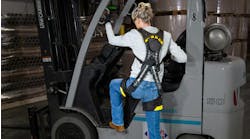A nearly two-year upward trend experienced a hiccup according to the quarterly MAPI Foundation Business Outlook, a survey conducted by the MAPI Foundation, the research affiliate of the Manufacturers Alliance for Productivity and Innovation.
The survey’s composite index is a leading indicator for the manufacturing sector. The October 2014 composite index slipped to 67 from 71 in the July 2014 survey, ending a run of six quarters of incremental improvement. Still, it marked the 20th consecutive quarter the index has remained above the threshold of 50, the dividing line separating contraction and expansion. The Composite Business Outlook Index is based on a weighted sum of the Prospective U.S. Shipments, Backlog Orders, Inventory, and Profit Margin Indexes.
“The third quarter was less robust than the second quarter for manufacturers but the current index levels nonetheless indicate expansion for the sector,” said Donald A. Norman, Ph.D., MAPI Foundation director of economic studies.
Current Business Condition Indexes
The Inventory Index, based on a comparison of inventory levels in the third quarter of 2014 with those in the third quarter of 2013, increased to 69 in October from 59 in July.
“Inventories are well above their level in the third quarter of 2013, thus raising the question as to whether inventories have been overbuilt,” Norman wrote.
The Current Orders Index, which compares orders in the third quarter of 2014 with the third quarter of 2013, remained at 78 from the previous report. The Export Orders Index, which compares anticipated exports in the third quarter of 2014 with those of one year prior, fell to 65 from 67.
The Profit Margin Index decreased to 67 in October from 70 in July and the Backlog Orders Index also dropped, from 72 to 69.
The Capacity Utilization Index, which measures the percentage of firms operating above 85% of capacity, fell to 26.7% in October from 30.0% in July. This index, which tends to be somewhat volatile, is below its long-term average of 32%.










